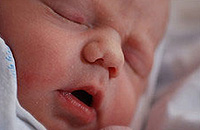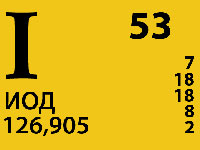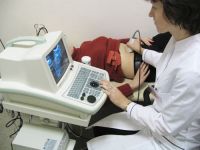Seven-year-old boy can not stop on the spot, what does teachers and parents bring to madness. This is a typical case of attention deficit and hyperactivity syndrome, at which the level of attention concentration is reduced and distracting abolition increases. Learn about the main symptoms of ADHD in children and try to understand this disorder.
Content
Attention deficit and hyperactivity syndrome
- Constant anxiety and nonsense
- Excessive noise (the child speaks too loudly or playing)
- Inability to listen to others (the child constantly interrupts)
- Inability to perform instructions and follow instructions
- Attention deficit and forgetfulness
- Inorganic and inattention to detail
- Uncontrolled room movement
- Fast loss of interest in tasks and games
- Inability to finish the work started, for example, homework

The diagnosis of attention deficit and hyperactivity syndrome is very important for the formation of a correct understanding of this disorder. The diagnosis should take part in the teacher, parents and doctors. Often, not only a complete medical examination is needed for diagnosis, but also a professional assessment of cognitive abilities and an IQ of a child, as well as the analysis of its academic performance at school.
Also assessing speech and linguistic abilities. The syndrome of attention deficit with hyperactivity is often accompanied by other behavioral or emotional disorders. Children have difficulty difficulties in the team of peers. They are easy to learn about behavior - they are e-mail, run, jump during classes. Attention deficit and high level of hyperactivity interfere with the child normally communicate with others.
Treatment
And the correction of attention deficit syndrome with hyperactivity
The child suffering from hyperactivity deficit deficit syndrome is usually trained along with peers, but the teacher should pay attention to his needs, for example, to give more time to perform the task, put a child in the part of the room where it will be less distracted.
The child also needs support for adults and their help controlling behavior and level of attention. To teach such a child, you need to use modern supporting learning methods, helping to concentrate attention and assimilate the educational material. Treatment includes behavioral and drug therapy. Not only family should be involved in the treatment, but also the school.
Parents and teachers must learn to correct the behavior of a child, direct its energy and encourage the success of the child. This implies the development of problems of solving problems, open and efficient communication skills, anger management and conflict solutions. Drug treatment is limited by the reception of amphetamine group of stimulating drugs, for example, ritaline and dexedrine.
These drugs reduce the level of hyperactivity in children and help concentrate attention. There is also an improvement in behavior (reducing aggression, forgetfulness). However, these drugs have a number of side effects, in particular, cause insomnia, loss of appetite, weight loss, depression, depression and drowsiness.









